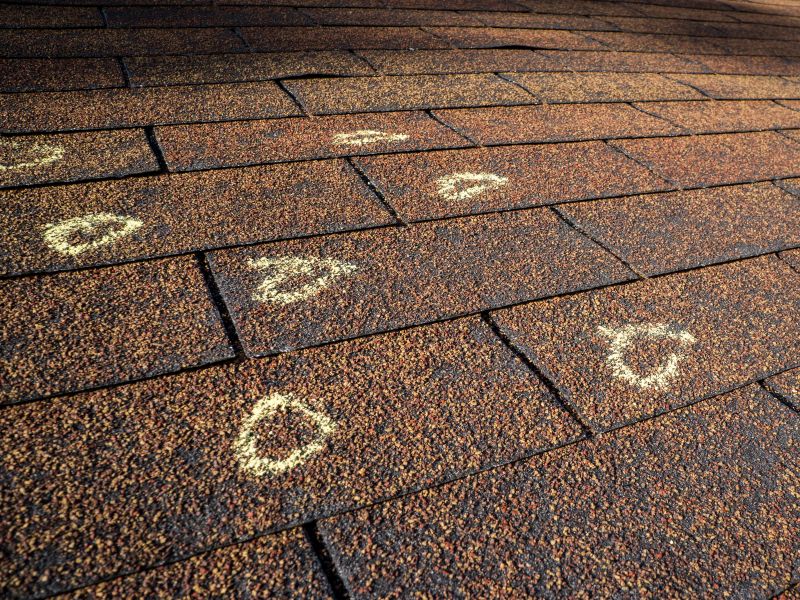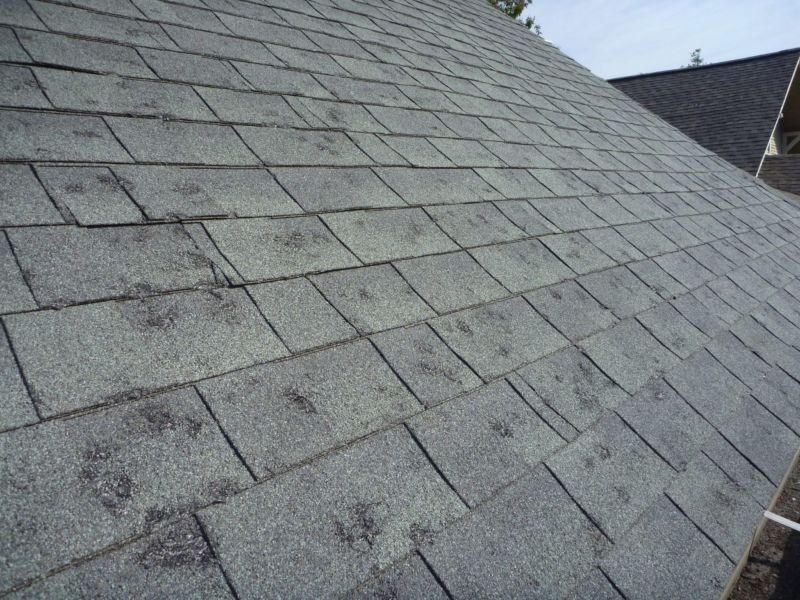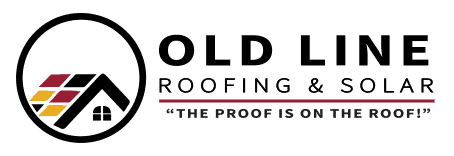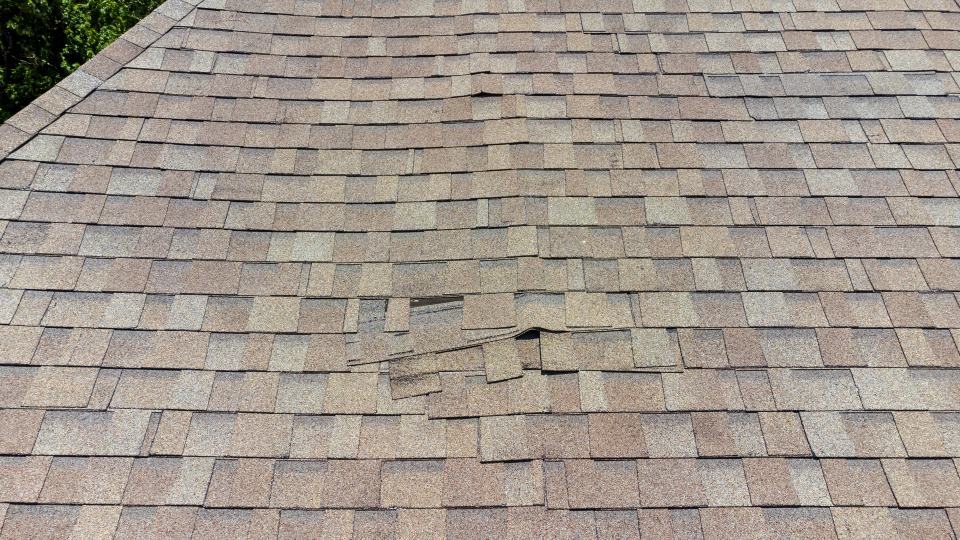Sun exposure refers to the amount of time a surface is exposed to sunlight. When it comes to roofs, sun exposure and roof damage can have detrimental effects over time. The constant exposure to UV rays, intense heat, and changes in temperature can can damage your roof. The sun’s UV rays can cause the roof materials to deteriorate, resulting in cracked shingles, warped tiles, or weakened overall structure. Sun exposure and roof damage can lead to leaks and moisture penetration, which can further harm the roof and the building below. Additionally, the excessive heat from the sun can cause the roof to expand and contract, putting stress on the materials and potentially causing them to break or become loose. Consequently, regular sun exposure can accelerate the aging process of a roof and shorten its lifespan. It is important for homeowners and property managers to monitor and maintain their roofs regularly to prevent sun exposure and roof damage and ensure the longevity of their roofing system.
The Impact of Sun Damage on Roofing Materials
Sun exposure damage can have a significant impact on roofing materials, leading to various types of damage to your home’s roof. The sun’s ultraviolet (UV) rays are particularly harmful to roofs, causing the materials to deteriorate over time. One of the most common problems associated with sun exposure and roof damage is roof discoloration. The constant exposure to sunlight can cause the roof to fade and turn gray or even brown in color. Additionally, the heat from the sun can cause the roofing materials to expand and contract, leading to cracks and other forms of damage. The extreme temperatures can also weaken the roof’s overall structure, making it more susceptible to leaks and other issues. Moreover, prolonged sun exposure can dry out the roofing materials, causing them to become brittle and easily breakable. To mitigate the impact of sun exposure and roof damage, it is important to use high-quality materials that are resistant to UV damage and to regularly inspect and maintain the roof to prevent any potential issues.
A. Effects of UV rays on different roofing materials
Sun exposure can have significant effects on different roofing materials. One of the main culprits are the harmful UV rays that can cause a variety of issues. Asphalt shingles, for instance, can experience color fading due to prolonged exposure to the sun. This can not only impact the aesthetic appeal of the roof but can also lead to accelerated aging of the shingles. Similarly, wooden shingles can become dry, brittle, and prone to cracking under the intense UV radiation. Metal roofs, on the other hand, may experience degradation of their protective coating, leading to rust and corrosion over time. Additionally, UV rays can weaken the adhesive properties of various roofing materials, which can result in loose or damaged shingles. Therefore, it is vital for homeowners to choose roofing materials that are designed to withstand sun exposure and roof damage and to also consider regular maintenance to prevent significant sun damage to your roof.
1. Asphalt shingles
Sun exposure can cause significant damage to asphalt shingles on roofs. Over time, continuous sun exposure can lead to the deterioration of the shingles, as the heat and UV rays from the sun can cause them to become brittle and dry. This can result in cracks, splits, and curling of the shingles, allowing water to penetrate through the roof and causing further damage. In addition, the intense heat from the sun can cause the asphalt to melt and warp, compromising the structural integrity of the roof. Sun damage to asphalt shingles is often more pronounced in regions with hot and sunny climates, as the prolonged exposure to extreme temperatures accelerates the deterioration process. Regular maintenance and inspections can help identify and address sun-exposure-related roof damage early on, ensuring the longevity and performance of the shingles and the overall integrity of the roof.
2. Metal roofing
Sun exposure can cause significant damage to metal roofing. Over time, prolonged exposure to direct sunlight can cause the metal to expand and contract, leading to cracks and warping. Additionally, the sun’s UV rays can cause the paint or coating on the metal to fade, leading to a dull and worn-out appearance. This not only affects the aesthetic appeal of the roof but also reduces its functionality. Sun exposure and roof damage can weaken the structural integrity of the roof, making it more susceptible to leakage and water damage during heavy rain or storms. Furthermore, excessive heat from the sun can cause the metal to expand, which may result in loosened screws or fasteners, leading to a compromised roof system. Therefore, it is crucial to regularly inspect metal roofing for any signs of sun exposure and roof damage and take necessary measures to protect and maintain its condition. This may include applying reflective coatings, providing proper insulation, and seeking professional assistance to repair any visible damage caused by sun exposure.
3. Clay or concrete tiles
Sun exposure can cause significant damage to clay or concrete tiles on roofs. Over time, the intense heat and UV rays from the sun can cause these tiles to fade, crack, and deteriorate. The constant exposure to the sun’s rays weakens the tiles, making them more susceptible to breaking during extreme weather conditions. Additionally, the expansion and contraction that occurs due to temperature changes further adds to the stress on the tiles, leading to increased damage. The sun’s rays can also cause the color of the tiles to fade, resulting in a less aesthetically appealing roof. This damage not only affects the functionality of the roof but also affects its overall appearance. Therefore, it is important for homeowners to regularly inspect and maintain their roofs to address any sun exposure-related damage promptly. Taking preventative measures like applying a protective coating can help extend the lifespan of the clay or concrete tiles and minimize the impact of sun exposure and roof damage.
B. Fading and discoloration
Sun exposure can cause fading and discoloration, which can lead to damage to various surfaces, including roofs. When a roof is exposed to direct sunlight for extended periods of time, the ultraviolet (UV) rays from the sun can cause the colors to fade and become dull. This is particularly noticeable on roofs with vibrant or dark shades. Over time, the continuous exposure to the sun’s rays can also cause the materials on the roof to deteriorate, leading to cracks, leaks, and other forms of damage. Discoloration is another common issue caused by sun exposure. The constant exposure to the sun can cause the colors on a roof to change or bleach out, making it appear faded and worn out. This not only affects the aesthetic appeal of the roof but can also impact its functionality. Therefore, it is essential to take precautionary measures such as applying a UV protective coating or using materials that are resistant to sun damage in order to maintain the longevity and durability of roofs.
C. Deterioration and cracking sun exposure damage
Exposure to sunlight can have damaging effects on various materials, leading to deterioration and cracking. This is particularly evident in organic materials such as wood, plastics, and textiles. Sunlight contains ultraviolet (UV) radiation, which can break down the chemical bonds and weaken the structure of these materials over time. The UV rays penetrate the surface and trigger a process called photochemical degradation, where the energy from the radiation causes the material’s molecules to rearrange, leading to deterioration. As a result, the material may become discolored, brittle, or develop cracks. For instance, wooden surfaces exposed to direct sunlight may experience fading, warping, and splintering. Similarly, plastics and textiles can become brittle and fade in color due to sun exposure. To prevent and mitigate sun exposure and roof damage, protective measures can be taken such as applying coatings or additives with UV absorbers or blockers. Additionally, limiting sun exposure through shade or covering materials when not in use can help prolong their lifespan and reduce the risk of deterioration and cracking. Contact us at Old Line Roofing and Solar and we will send out our experienced roofing contractor to discuss the proper materials to use on your roof to limit sun exposure and roof damage during the summer months.

Common Signs of Sun Exposure Damage To Your Roof
A. Curling or warping shingles
When a shingle is exposed to light from the sun, it can lead to curling or warping, both of which are signs of sun exposure and roof damage. Curling occurs when the edges of the shingle peel or lift up, creating a curved shape. Similarly, warping happens when the shingle becomes distorted and loses its original flat structure. Sun exposure and roof damage is more likely to occur on older shingles as they have been exposed to the elements for a longer period of time. Additionally, shingles that are poorly ventilated and located in areas with intense direct sunlight are also prone to this type of damage. These issues are not only aesthetically unappealing but can also compromise the integrity of the roof, leading to leaks and other water-related problems. Regular inspection and maintenance of the roof, such as replacing damaged shingles, can help prevent further damage caused by sun exposure. Additionally, installing reflective shingles or applying a roof coating can be beneficial in reducing the impact of the sun’s rays and extending the lifespan of the shingles.
B. Blistering or bubbling
Blistering or bubbling sun direct exposure can cause severe damage to a roof. When a roof is exposed to intense heat for prolonged periods, the asphalt shingles or other roofing materials can blister or bubble. These blisters and bubbles form when air or moisture becomes trapped between the layers of the roofing material. As the sun continues to beat down on the roof, the trapped air and moisture expand, causing the roof to become uneven and compromised. Over time, this can lead to leaks and further damage to the underlying structure of the roof. Blistering and bubbling are more common in older roofs or roofs that were poorly installed or maintained. It is important to monitor the condition of the roof and address any signs of blistering or bubbling promptly. Regular roof inspections, proper ventilation, and the use of reflective materials can help reduce the risk of blistering and bubbling due to direct sun exposure.
C. Granule loss sun exposure roof damage
One of the most common causes of roof damage is exposure to the sun. Over time, prolonged sun exposure can cause the granules on the roof shingles to deteriorate and break down. These granules serve as a protective layer that helps to reflect the sun’s rays and prevent them from penetrating the roof. When the granules start to wear off, the roof becomes more vulnerable to damage from the sun’s UV rays. This can lead to the shingles becoming brittle and more prone to cracking and breaking. Additionally, the loss of granules can result in the roof becoming less effective at regulating temperature and insulating the home. As a result, the home may become less energy-efficient, leading to higher energy costs. To mitigate the effects of sun exposure and roof damage, it is important to regularly inspect and maintain the roof, and if necessary, make any necessary repairs or replacements.
D. Leaks and water damage
One of the most common causes of roof damage is leaks, which can lead to water damage if not addressed promptly. Leaks can occur due to various reasons such as missing or damaged shingles, cracked flashing, or clogged gutters. When a roof has leaks, water can penetrate through the roof and into the underlying structure, causing extensive damage over time. This includes rotting wood, mold growth, and weakened structural integrity. If left untreated, water damage can spread to other parts of the building, potentially causing even more costly repairs. Therefore, it is important to regularly inspect and maintain the roof to identify any leaks and promptly fix them. This can involve inspecting the shingles, flashing, and gutters for damage or clogs, as well as ensuring proper roof ventilation to prevent condensation buildup. Additionally, taking immediate action when leaks are detected can help minimize the risk of extensive water damage and preserve the longevity of the roof.
Preventive Measures to Minimize Damage To Your Roof
Sun exposure can cause significant damage to roofs over time. To minimize this damage, there are several preventive measures that homeowners can take. One of the most effective ways is by installing a reflective roof coating. This coating reflects sunlight away from the roof, reducing heat absorption and minimizing the impact of UV rays. Regular roof inspections are also essential to identify and address any signs of damage early on. Checking for loose or damaged shingles, cracks, or leaks can help prevent further deterioration. Another preventive measure is ensuring proper attic ventilation. Adequate airflow helps to dissipate heat and reduce the risk of damage caused by trapped moisture and excessive heat buildup. Additionally, maintaining gutters and downspouts is crucial as they help divert water away from the roof, preventing potential water damage. Finally, trimming nearby trees and branches can prevent them from rubbing against the roof and causing abrasions or damage during strong winds. By implementing these preventive measures, homeowners can minimize the impact of sun exposure and roof damage which will prolong their lifespan.
A. Regular roof inspections to prevent sun exposure and roof damage
Regular roof inspections are crucial in preventing sun exposure and roof damage. The sun’s harmful UV rays can cause significant damage to the roof’s materials over time, leading to leaks and other structural issues. Conducting regular inspections allows homeowners to identify any signs of damage early on and take necessary action to minimize further deterioration. During these inspections, professionals can check for any signs of cracking, blistering, or peeling on the roof surface, which are common indicators of sun damage. They can also examine the integrity of the roof’s protective coating, as extended sun exposure can cause it to deteriorate. Additionally, roof inspections provide an opportunity to identify and repair any loose or damaged shingles, ensuring that the roof remains sturdy and well-protected from the sun’s harmful rays. By regularly inspecting their roofs, homeowners can effectively prevent sun exposure and roof damage and extend the lifespan of their roof.
B. Applying reflective coatings or paints to prevent sun exposure and roof damage
Applying reflective coatings or paints to roofs is an effective method of reducing sun exposure and roof damage. These coatings are designed to reflect sunlight and heat, therefore minimizing the amount of UV rays absorbed by the roof. By reducing this sun exposure, the roof stays cooler and prevents the degradation and damage that can occur over time due to excessive heat. The reflective coatings also help to lower the energy consumption of the building by reducing the need for air conditioning, as the interior temperature remains cooler. Additionally, these coatings can extend the lifespan of the roof by protecting it from the harmful effects of UV radiation. Reflective coatings are available in a variety of colors and can be applied on different types of roofs, including metal, asphalt, and concrete. They provide an affordable and eco-friendly solution to combat sun exposure and maintain the integrity of roofs.
C. Installing proper ventilation systems to prevent sun exposure and roof damage
Installing proper ventilation systems is essential in preventing sun exposure and roof damage in buildings. Sun exposure can lead to excessive heat buildup, causing discomfort and health issues for occupants. Without the right ventilation, heat can accumulate in the roof space, leading to the degradation of roofing materials and potential leaks. By installing ventilation systems, such as ridge vents or attic fans, the hot air can be efficiently expelled, reducing the temperature inside the building and protecting the roof from damage. In addition to preventing heat buildup, proper ventilation also helps to control moisture levels, preventing the growth of mold and mildew, which can further deteriorate the roof and compromise the indoor air quality. It is crucial to have a well-designed ventilation system that provides a balanced airflow, ensuring efficient cooling and protection against sun exposure and roof damage. Regular maintenance and inspection of these systems are also necessary to ensure their continued effectiveness against sun exposure and roof damage.
D. Using UV-resistant roofing materials
Using UV-resistant roofing materials is essential in protecting your home or building from the damaging effects of the sun’s ultraviolet rays. The sun’s UV rays can cause significant sun exposure and roof damage to unprotected roofs, leading to premature aging, discoloration, cracking, causing it to fade and even leakage. UV-resistant roofing materials, on the other hand, are specifically designed to withstand long-term exposure to the sun’s harmful rays. These materials typically contain additives or coatings that reflect or absorb the UV radiation, reducing heat absorption and minimizing damage. By installing UV-resistant roofing materials, you can prolong the lifespan of your roof and avoid costly repairs or replacements from sun exposure and roof damage. Additionally, these materials can help to improve the overall energy efficiency of your building by reducing heat transfer into the interior, which can lead to lower cooling costs. Overall, investing in UV-resistant roofing materials is a smart choice to ensure the long-term durability and protection of your home or building.

The Benefits of Proper Roof Maintenance and Repair To Prevent Excessive Sun Exposure Damage
Proper seasonal roof maintenance and repair are essential not only to prevent sun exposure but also to protect the structure of the roof from potential damage. By regularly inspecting the roof for any signs of wear or damage, homeowners can proactively address issues before they worsen. One of the key benefits of proper roof maintenance is that it helps prevent sun exposure and roof damage. Sun rays can cause the roofing materials to deteriorate over time, leading to cracks, leaks, and other problems. By regularly checking for any signs of sun damage, such as fading or discoloration, homeowners can take prompt action to repair or replace the affected areas. Furthermore, proper roof maintenance also prevents structural damage. By addressing any issues, such as cracked or missing shingles, homeowners can prevent water from seeping into the roof and causing leaks or rot. Overall, investing in regular roof maintenance and repair not only helps to prevent sun exposure and roof damage but also extends the lifespan of the roof, saving homeowners from costly repairs in the long run.
A. Extending the lifespan of the roof
Extending the lifespan of the roof can contribute to the overall durability and longevity of a building. Several measures can be taken to achieve this goal. Regular roof inspections and maintenance are essential to identify any issues or potential problems that may arise. Cleaning the roof and removing debris, such as leaves or branches, can prevent the build-up of moisture and the growth of moss or algae. Proper ventilation is also crucial to ensure that the roof is not exposed to excessive heat or moisture, which can lead to damage over time. Additionally, applying a protective coating to the roof can help to protect it from the elements and extend its lifespan. Investing in high-quality roofing materials and professional installation can also make a significant difference in the longevity of the roof. By prioritizing these practices, homeowners and building owners can maximize the lifespan of their roof and minimize the need for costly repairs or replacements. Our roofing specailists at Old Line Roofing and Solar can perform any roofing services and repairs that will extend the life of your roof due to sun exposure and roof damage.
B. Saving money on energy costs and preventing sun exposure and roof damage
Saving money on energy costs and preventing sun exposure and roof damage go hand in hand when it comes to making smart decisions about home maintenance. By investing in proper insulation and weather-stripping, homeowners can ensure that their homes are well-protected against heat transfer and air leakage. This, in turn, reduces the need for excessive heating or cooling, leading to significant savings on energy bills. Additionally, installing window treatments such as blinds, shades, or curtains can help prevent the sun’s rays from directly entering the house, reducing the amount of heat that needs to be cooled. Moreover, utilizing a reflective roof coating or opting for light-colored roofing materials can repel sunlight, minimizing heat absorption and lowering the demand for air conditioning. By taking these steps, homeowners not only save money on energy costs but also shield their roof from potential damage caused by excessive sun exposure, leading to longer roof lifespan and reduced maintenance expenses.
C. Avoiding costly repairs and replacements from sun exposure and roof damage
Regular maintenance and preventative measures are key to avoiding costly repairs and replacements due to sun exposure and roof damage. Sun exposure can cause the roof to deteriorate over time, leading to leaks, cracks, and other issues. To protect your roof, make sure you have proper insulation and ventilation in place. Insulation helps regulate the temperature inside your home, reducing the strain on your roof. Additionally, consider applying a reflective coating or using light-colored roofing materials to minimize heat absorption. Regularly inspect your roof for any signs of damage, such as loose or missing shingles, and promptly address them. Trim any overhanging tree branches to prevent them from scratching or damaging the roof during strong winds. Consider hiring professionals for regular roof inspections and maintenance to detect and address any problems early on. By staying proactive and taking preventive measures, you can avoid costly repairs and replacements caused by sun exposure and roof damage.
Conclusion
Understanding the impact of sun exposure on roof damage is crucial for maintaining the longevity and integrity of a roof. Sun exposure can cause significant damage to roofs over time. The ultraviolet (UV) rays from the sun can break down the roofing materials, causing them to become brittle and eventually crack or warp. This can lead to leaks, water damage, and the need for costly repairs or even roof replacements. Additionally, the heat from the sun can cause the roof to expand and contract, leading to stress on the materials and increasing the likelihood of damage. It is important to choose roofing materials that are resistant to UV rays and to regularly inspect and maintain the roof to identify and address any sun-related damage. Moreover, understanding the impact of sun exposure on roof damage can also help in making informed decisions when it comes to roof maintenance and choosing appropriate roofing materials for specific climates and environments.
Contact Us
Call us at Old Line Roofing and Solar and we will come out and do a roof inspection to see what preventative measures you can take to keep your roof safe from sun exposure. A roof is one of the most important parts of a house or building, so it’s important to keep it in good condition. Contact us today for a free quote.

